Abstract
Data on choice generally conform closely to an equation of the form: log(B1/B2)=a log(r1/r2+log k, where B1 and B2 are the frequencies of responding at Alternatives 1 and 2, r1 and r2 are the obtained reinforcement from Alternatives 1 and 2, and a and k are empirical constants. When a and k equal one, this equation is equivalent to the matching relation: B1/B2=r1/r2. Two types of deviation from matching can occur with this formulation: a and k not equal to one. In some experiments, a systematically falls short of one. This deviation is undermatching. The reasons for undermatching are obscure at present. Some evidence suggests, however, that factors favoring discrimination also favor matching. Matching (a=1) may represent the norm in choice when discrimination is maximal. When k differs from one, its magnitude indicates the degree of bias in choice. The generalized matching law predicts that bias should take this form (adding a constant proportion of responding to the favored alternative). Data from a variety of experiments indicate that it generally does.
Full text
PDF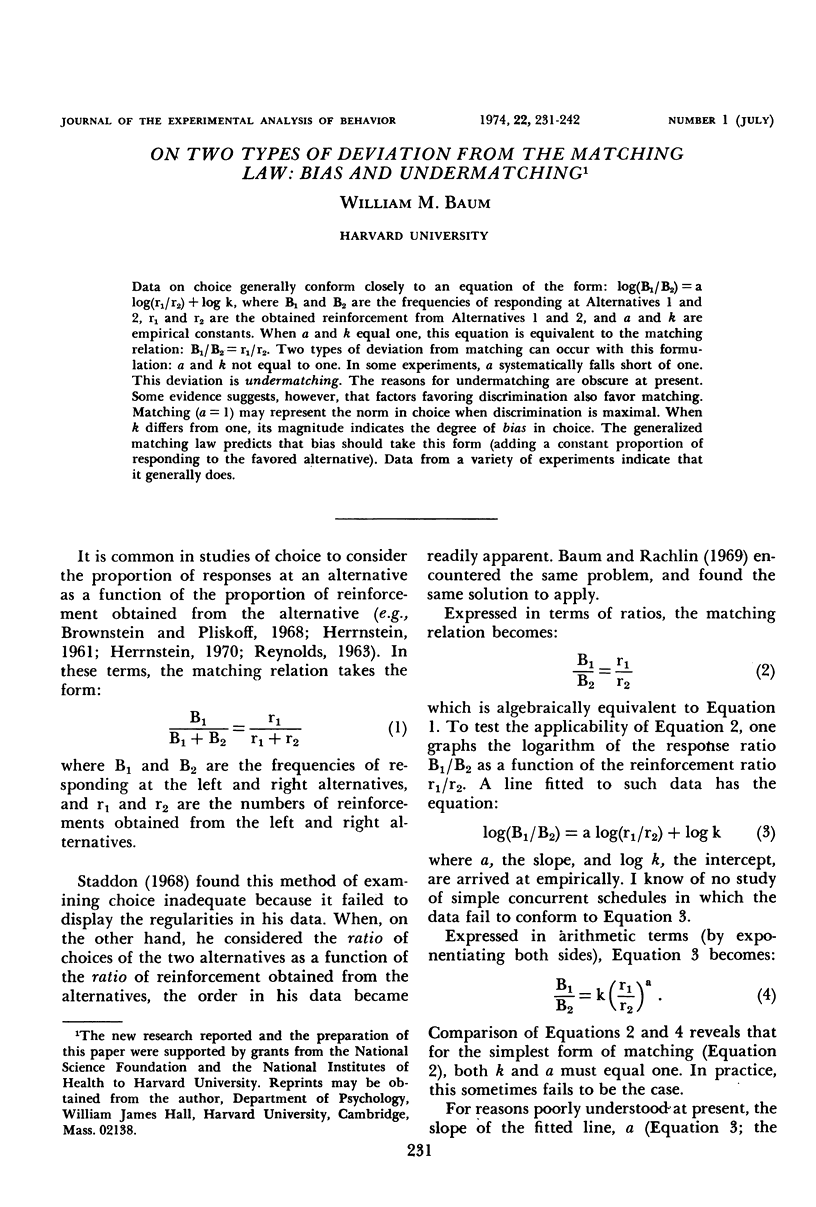
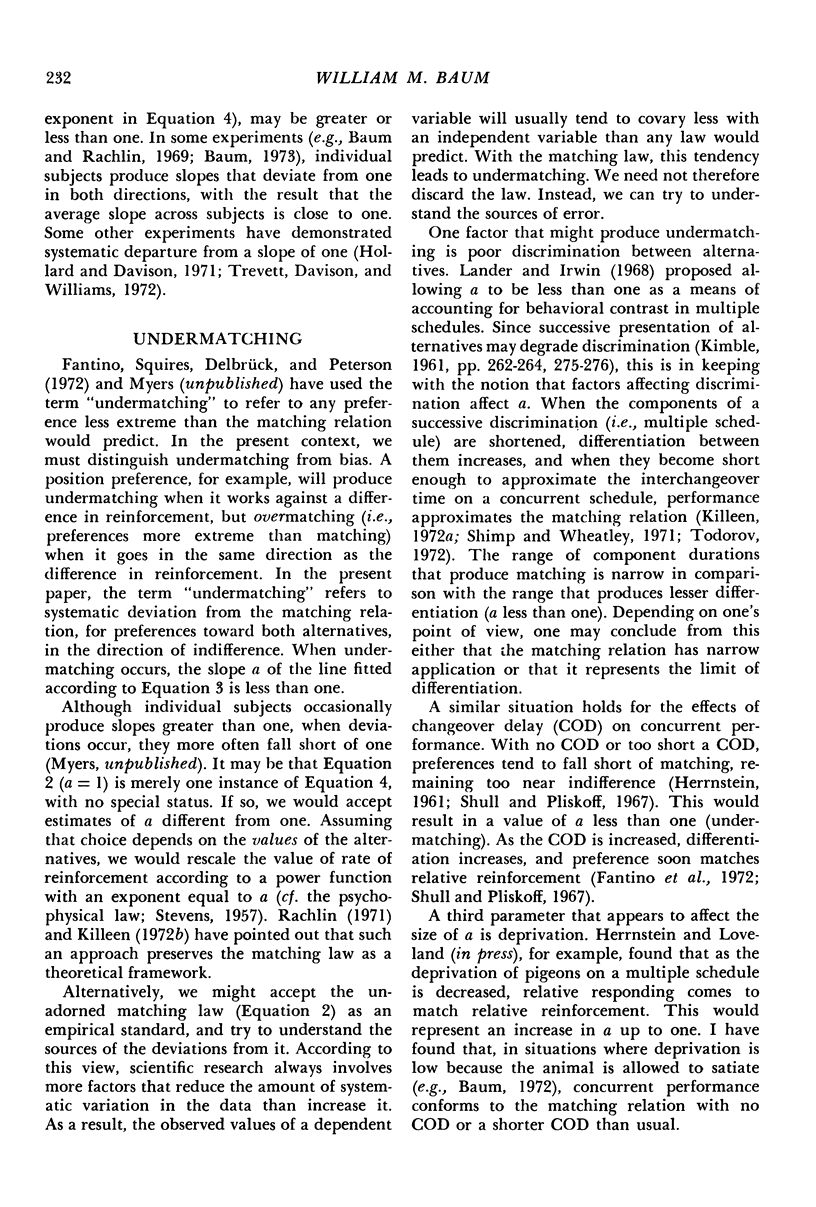
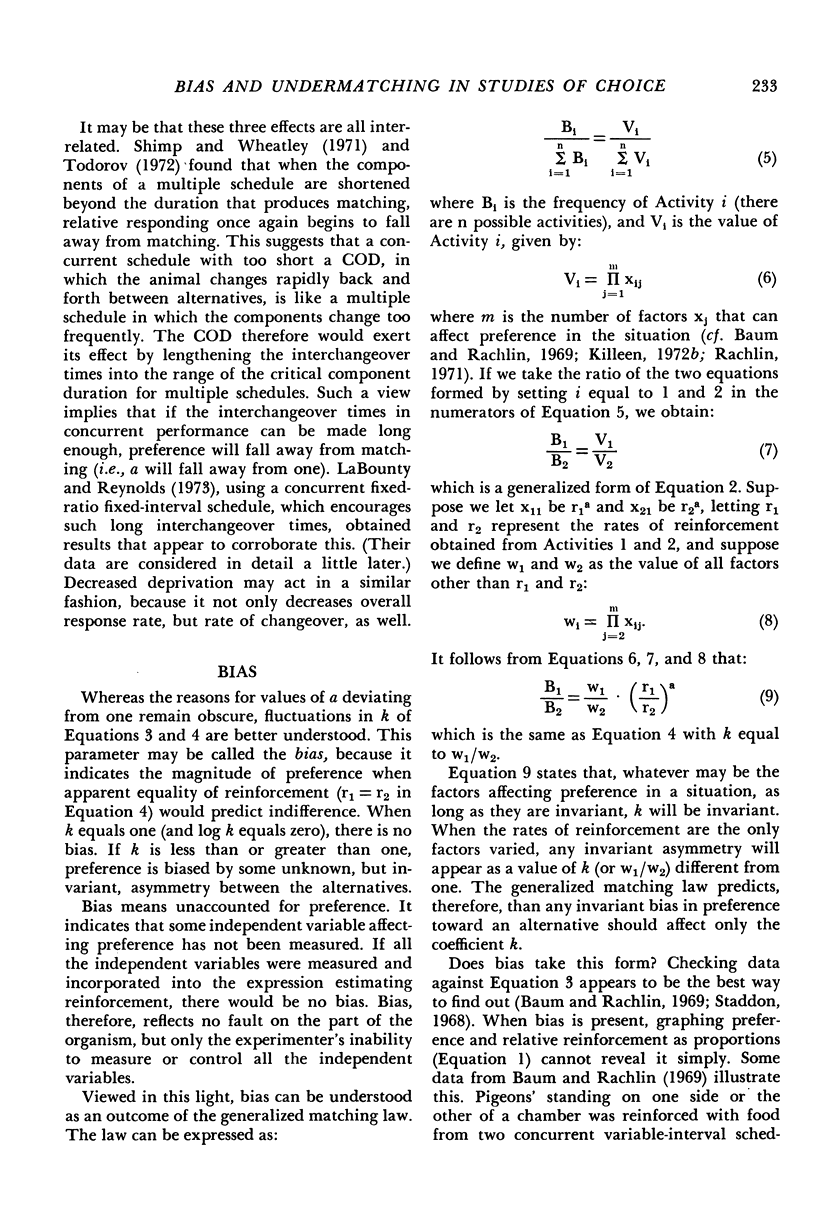
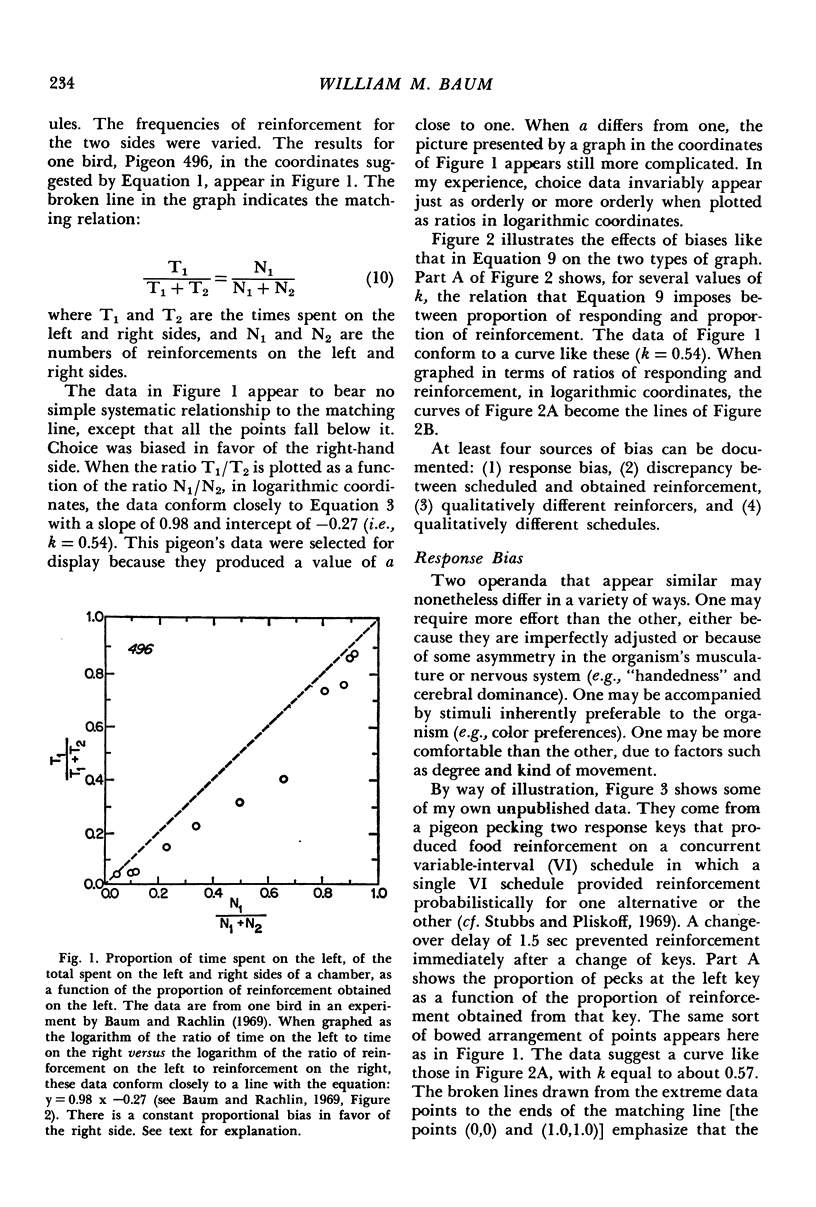
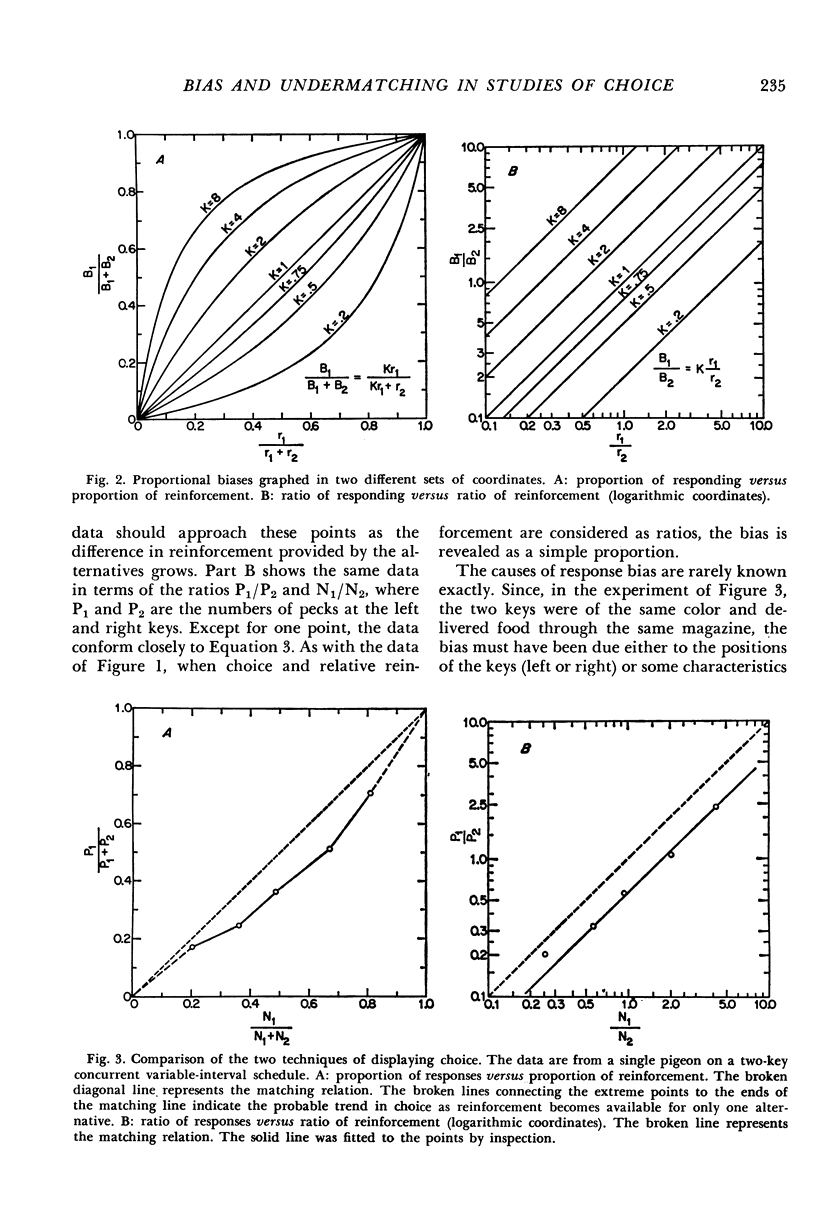
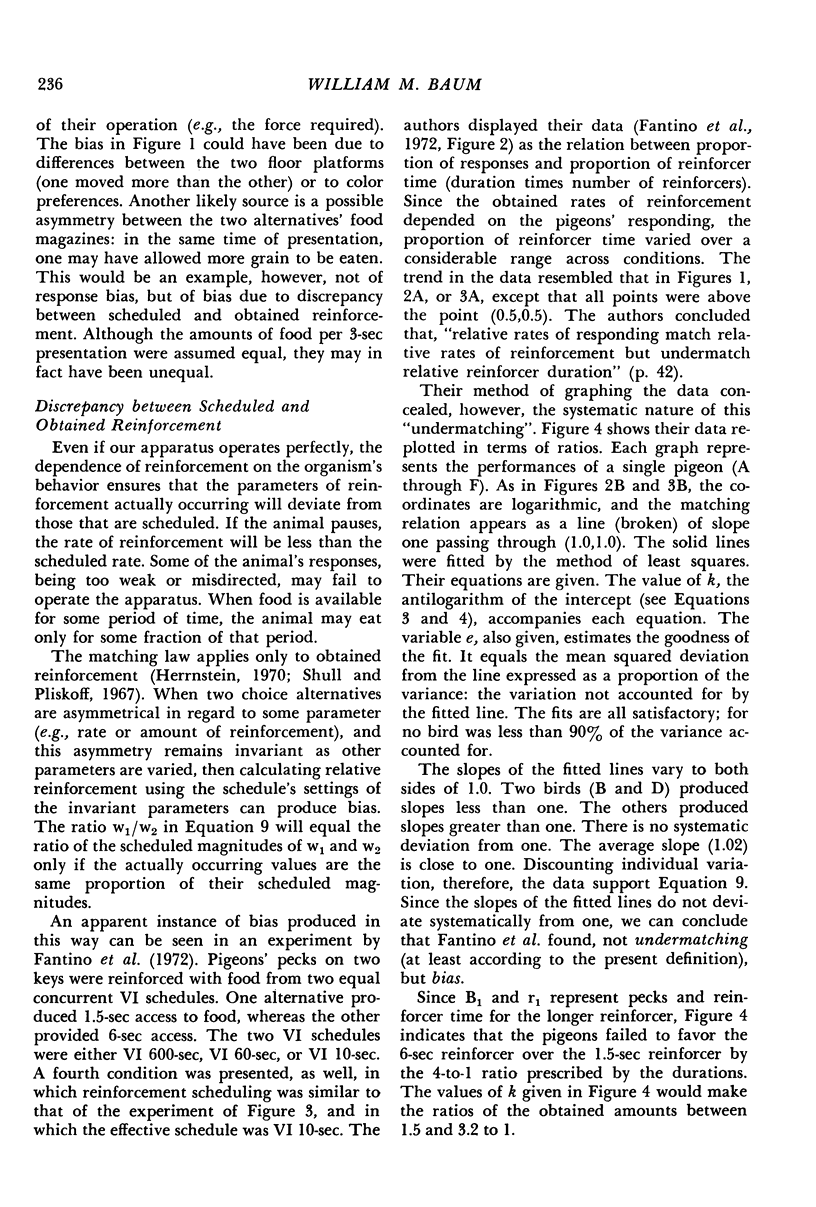
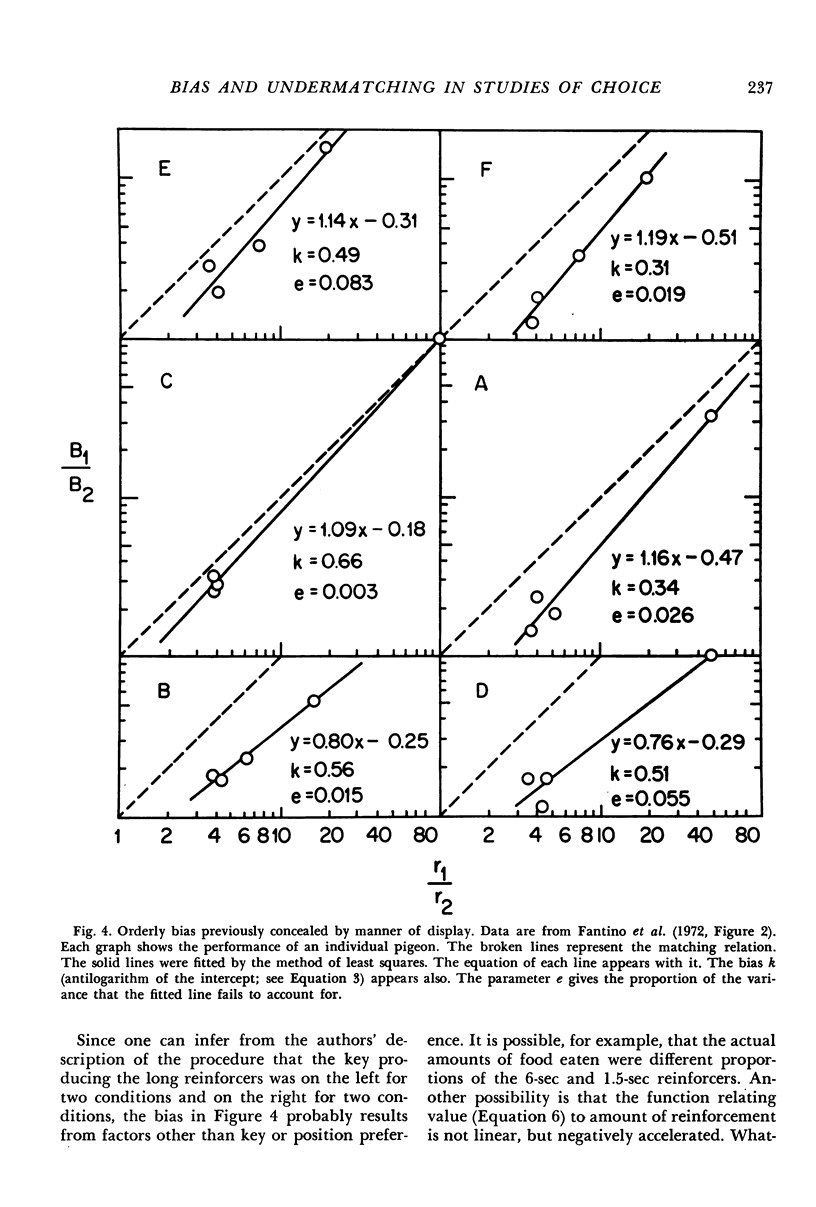
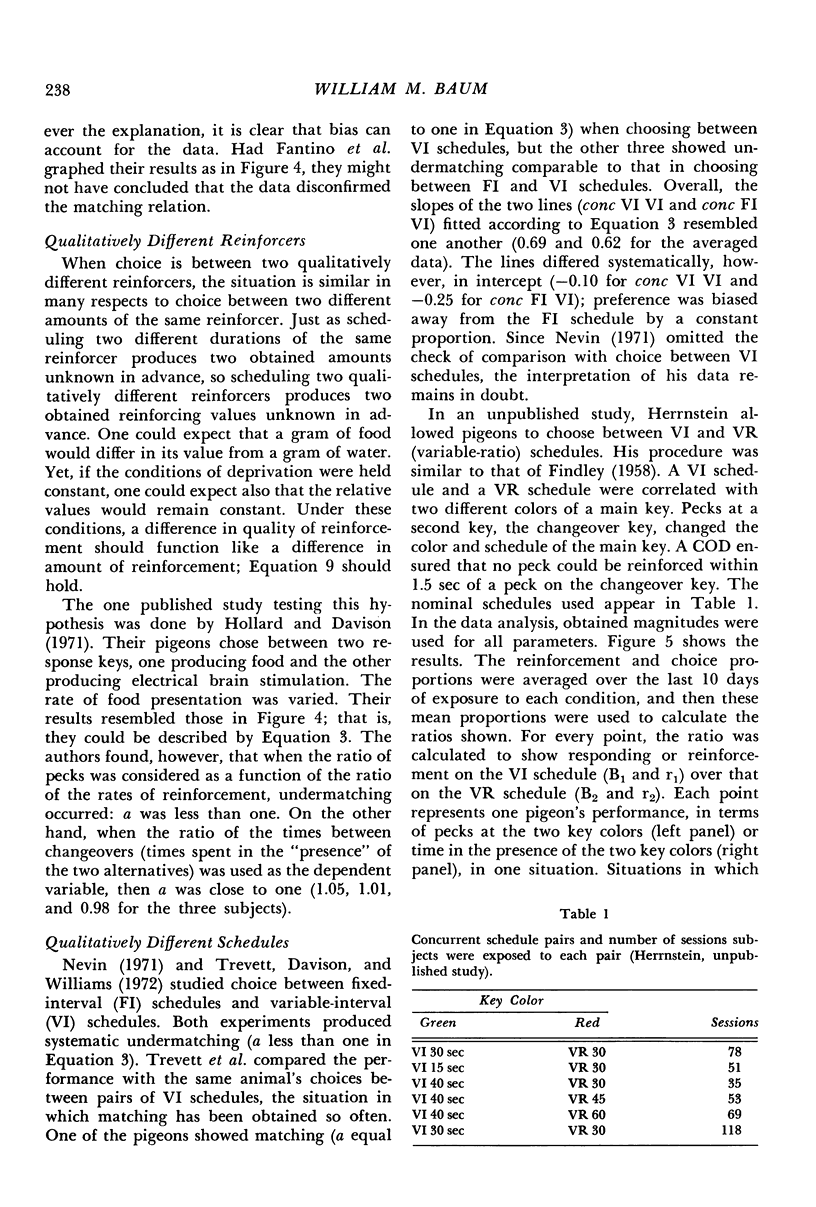
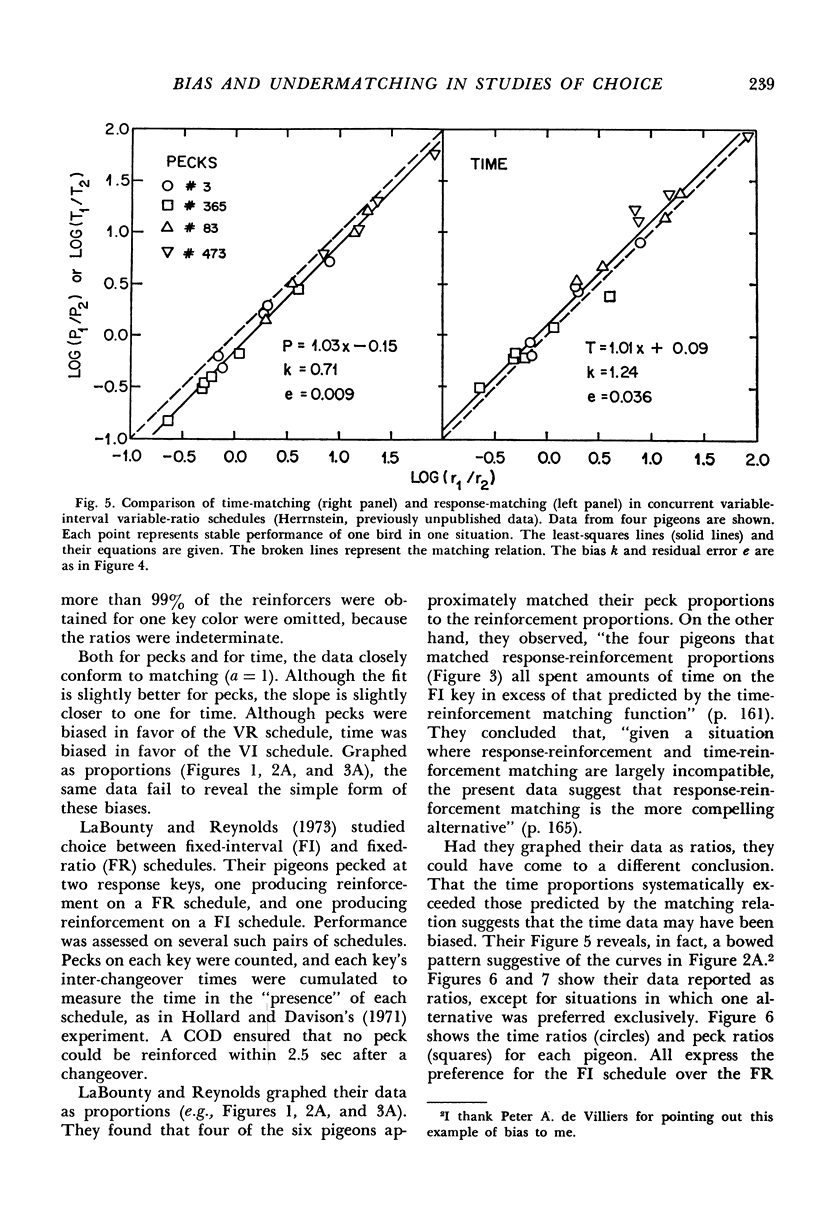
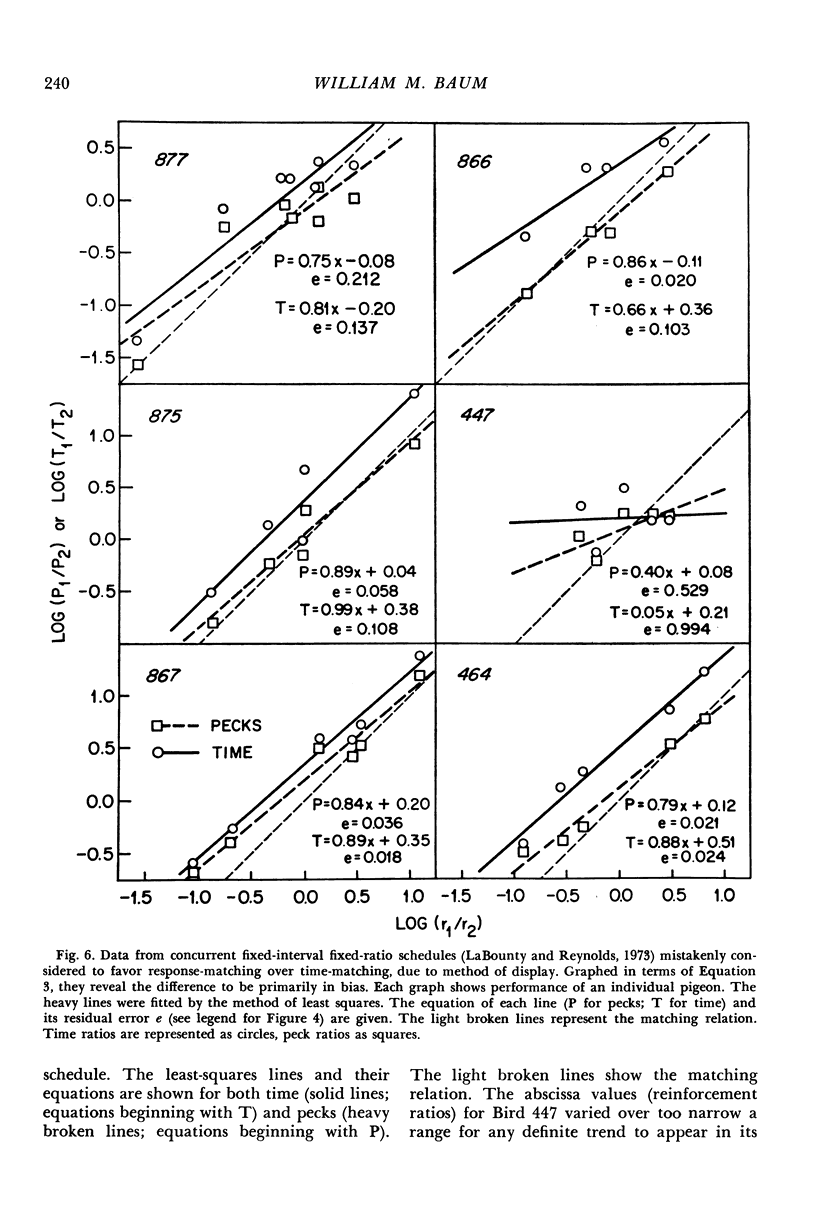
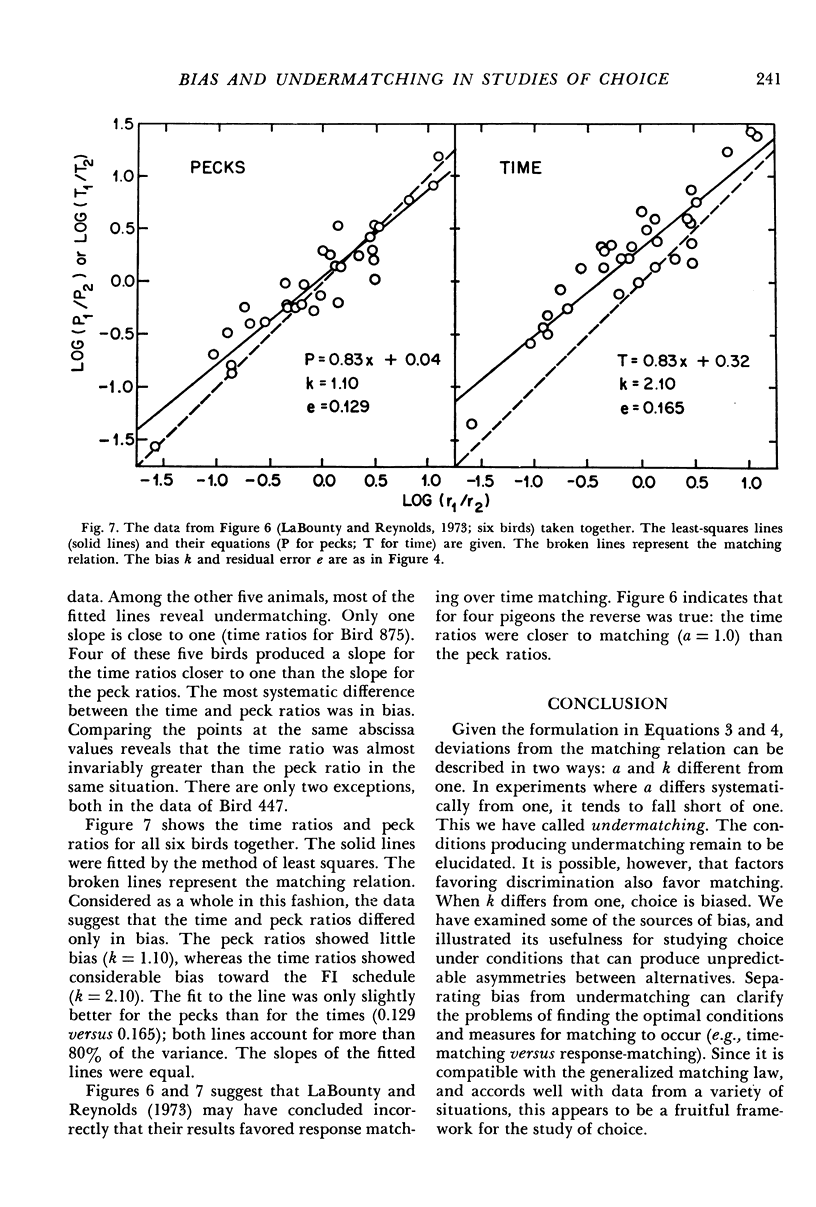
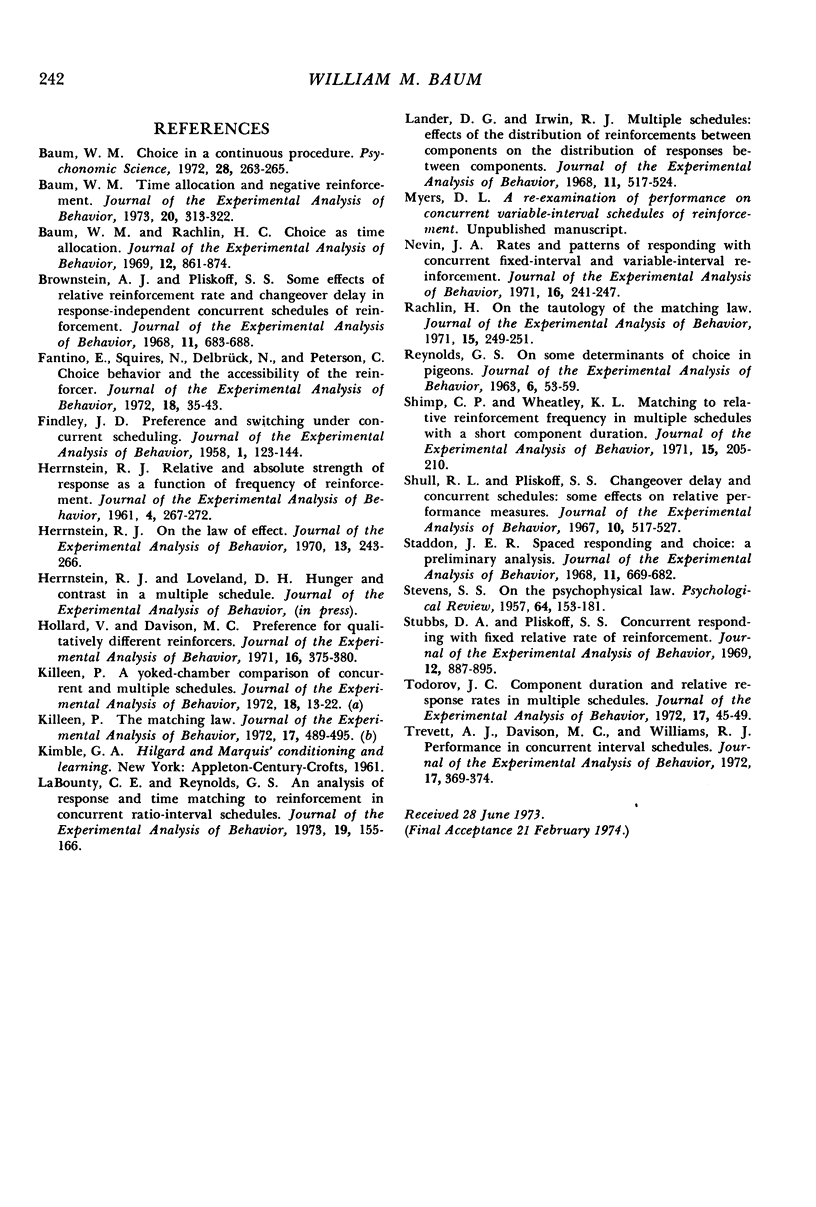
Selected References
These references are in PubMed. This may not be the complete list of references from this article.
- Baum W. M., Rachlin H. C. Choice as time allocation. J Exp Anal Behav. 1969 Nov;12(6):861–874. doi: 10.1901/jeab.1969.12-861. [DOI] [PMC free article] [PubMed] [Google Scholar]
- Baum W. M. Time allocation and negative reinforcement. J Exp Anal Behav. 1973 Nov;20(3):313–322. doi: 10.1901/jeab.1973.20-313. [DOI] [PMC free article] [PubMed] [Google Scholar]
- Brownstein A. J., Pliskoff S. S. Some effects of relative reinforcement rate and changeover delay in response-independent concurrent schedules of reinforcement. J Exp Anal Behav. 1968 Nov;11(6):683–688. doi: 10.1901/jeab.1968.11-683. [DOI] [PMC free article] [PubMed] [Google Scholar]
- Fantino E., Squires N., Delbrück N., Peterson C. Choice behavior and the accessibility of the reinforcer. J Exp Anal Behav. 1972 Jul;18(1):35–43. doi: 10.1901/jeab.1972.18-35. [DOI] [PMC free article] [PubMed] [Google Scholar]
- Findley J. D. Preference and Switching under Concurrent Scheduling. J Exp Anal Behav. 1958 Apr;1(2):123–144. doi: 10.1901/jeab.1958.1-123. [DOI] [PMC free article] [PubMed] [Google Scholar]
- HERRNSTEIN R. J. Relative and absolute strength of response as a function of frequency of reinforcement. J Exp Anal Behav. 1961 Jul;4:267–272. doi: 10.1901/jeab.1961.4-267. [DOI] [PMC free article] [PubMed] [Google Scholar]
- Herrnstein R. J. On the law of effect. J Exp Anal Behav. 1970 Mar;13(2):243–266. doi: 10.1901/jeab.1970.13-243. [DOI] [PMC free article] [PubMed] [Google Scholar]
- Hollard V., Davison M. C. Preference for qualitatively different reinforcers. J Exp Anal Behav. 1971 Nov;16(3):375–380. doi: 10.1901/jeab.1971.16-375. [DOI] [PMC free article] [PubMed] [Google Scholar]
- Killeen P. A yoked-chamber comparison of concurrent and multiple schedules. J Exp Anal Behav. 1972 Jul;18(1):13–22. doi: 10.1901/jeab.1972.18-13. [DOI] [PMC free article] [PubMed] [Google Scholar]
- Killeen P. The matching law. J Exp Anal Behav. 1972 May;17(3):489–495. doi: 10.1901/jeab.1972.17-489. [DOI] [PMC free article] [PubMed] [Google Scholar]
- Labounty C. E., Reynolds G. S. An analysis of response and time matching to reinforcement in concurrent ratio-interval schedules. J Exp Anal Behav. 1973 Jan;19(1):155–166. doi: 10.1901/jeab.1973.19-155. [DOI] [PMC free article] [PubMed] [Google Scholar]
- Lander D. G., Irwin R. J. Multiple schedules: effects of the distribution of reinforcements between component on the distribution of responses between conponents. J Exp Anal Behav. 1968 Sep;11(5):517–524. doi: 10.1901/jeab.1968.11-517. [DOI] [PMC free article] [PubMed] [Google Scholar]
- Nevin J. A. Rates and patterns of responding with concurrent fixed-interval and variable-interval reinforcement. J Exp Anal Behav. 1971 Sep;16(2):241–247. doi: 10.1901/jeab.1971.16-241. [DOI] [PMC free article] [PubMed] [Google Scholar]
- REYNOLDS G. S. On some determinants of choice in pigeons. J Exp Anal Behav. 1963 Jan;6:53–59. doi: 10.1901/jeab.1963.6-53. [DOI] [PMC free article] [PubMed] [Google Scholar]
- Rachlin H. On the tautology of the matching law. J Exp Anal Behav. 1971 Mar;15(2):249–251. doi: 10.1901/jeab.1971.15-249. [DOI] [PMC free article] [PubMed] [Google Scholar]
- STEVENS S. S. On the psychophysical law. Psychol Rev. 1957 May;64(3):153–181. doi: 10.1037/h0046162. [DOI] [PubMed] [Google Scholar]
- Shimp C. P., Wheatley K. L. Matching to relative reinforcement frequency in multiple schedules with a short component duration. J Exp Anal Behav. 1971 Mar;15(2):205–210. doi: 10.1901/jeab.1971.15-205. [DOI] [PMC free article] [PubMed] [Google Scholar]
- Shull R. L., Pliskoff S. S. Changeover delay and concurrent schedules: some effects on relative performance measures. J Exp Anal Behav. 1967 Nov;10(6):517–527. doi: 10.1901/jeab.1967.10-517. [DOI] [PMC free article] [PubMed] [Google Scholar]
- Staddon J. E. Spaced responding and choice: a preliminary analysis. J Exp Anal Behav. 1968 Nov;11(6):669–682. doi: 10.1901/jeab.1968.11-669. [DOI] [PMC free article] [PubMed] [Google Scholar]
- Stubbs D. A., Pliskoff S. S. Concurrent responding with fixed relative rate of reinforcement. J Exp Anal Behav. 1969 Nov;12(6):887–895. doi: 10.1901/jeab.1969.12-887. [DOI] [PMC free article] [PubMed] [Google Scholar]
- Todorov J. C. Component duration and relative response rates in multiple schedules. J Exp Anal Behav. 1972 Jan;17(1):45–49. doi: 10.1901/jeab.1972.17-45. [DOI] [PMC free article] [PubMed] [Google Scholar]
- Trevett A. J., Davison M. C., Williams R. J. Performance in concurrent interval schedules. J Exp Anal Behav. 1972 May;17(3):369–374. doi: 10.1901/jeab.1972.17-369. [DOI] [PMC free article] [PubMed] [Google Scholar]


